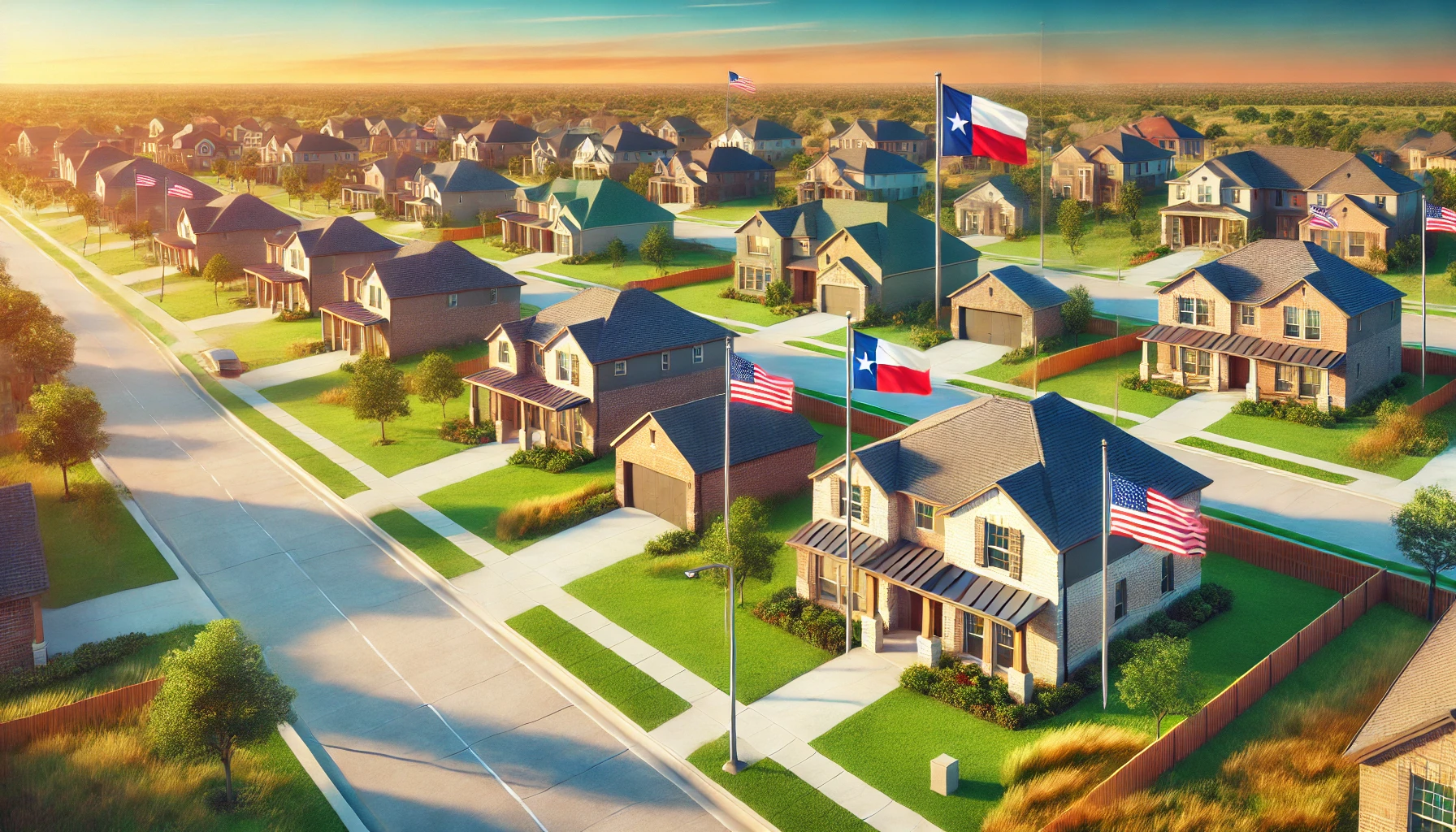Texas has long been known for its affordable housing market, attracting homebuyers from across the country. Compared to states like California and New York, homes in Texas are surprisingly cheap. But why is that the case? The combination of low taxes, abundant land, business-friendly policies, and lower construction costs all play a key role. Texas offers a rare balance of affordability and economic opportunity, making it an attractive place for both families and investors. In this article, we’ll explore the key factors that make Texas one of the most affordable housing markets in the U.S.
1. Geographic and Land Availability Factors
Texas’s large size and open land contribute significantly to affordable housing. Unlike densely populated states, Texas has plenty of room for new construction, which helps keep housing prices low. The availability of open land reduces competition for space, making it easier to develop housing at a lower cost. Additionally, lower population density in certain areas allows for more flexible zoning and larger lot sizes, creating more affordable housing options for both buyers and renters.
2. Economic and Tax Structure
Texas’s business-friendly tax structure plays a huge role in affordable housing. The state has no income tax, which makes homeownership more accessible. While property taxes are higher than the national average, the lack of state income tax helps balance overall costs. Texas also attracts businesses with its low regulations and incentives, driving job growth and increasing housing demand without skyrocketing prices. This economic advantage creates a stable housing market where homes remain affordable even as the population grows.
3. Construction and Development Costs
Lower construction and development costs make housing in Texas more affordable. Fewer zoning regulations and relaxed building codes reduce barriers for developers, allowing homes to be built faster and at lower costs. Texas also benefits from a lower cost of labor and construction materials compared to other states, keeping overall housing prices down. The availability of large plots of land means developers can build more homes at a lower price per unit, making it easier for buyers to find affordable housing options.
4. Population Growth and Migration Patterns
Texas has seen a surge in population growth due to migration from high-cost states like California and New York. Lower taxes, affordable housing, and a growing job market attract people seeking a better cost of living. This steady influx increases housing demand, but Texas’s ability to develop new homes quickly helps keep prices stable. The state’s strong economy and business-friendly environment continue to draw new residents, making Texas one of the fastest-growing and most affordable housing markets in the country.
5. Real Estate Market Trends
Texas’s real estate market remains strong due to steady demand and affordable prices. Unlike other states where housing costs rise rapidly, Texas benefits from a balanced market fueled by new construction and available land. The influx of businesses and job opportunities helps maintain consistent housing demand without driving up prices. Additionally, the variety of housing options—from urban apartments to suburban homes—makes Texas attractive to different buyers. This stable market creates opportunities for both first-time buyers and long-term investors.
6. Cost of Living and Lifestyle Appeal
Texas offers an affordable cost of living compared to states like California and New York. Lower housing costs, combined with no state income tax and lower utility expenses, make it easier for families to save money. The state also provides affordable amenities, including dining, entertainment, and transportation. Texas’s warm climate and diverse cities offer a high quality of life without the high costs found in other parts of the country. This combination of affordability and lifestyle makes Texas a popular place to live.
7. Challenges and Risks
While Texas remains affordable, rising property taxes and insurance costs pose challenges. Higher demand in major cities like Austin and Dallas is driving up housing prices, making it harder for some buyers to find affordable homes. Climate risks, such as hurricanes and extreme heat, also increase insurance rates and maintenance costs. Additionally, rapid population growth may strain infrastructure and public services. Despite these challenges, Texas’s overall affordability and business-friendly environment help keep housing costs more manageable than in other states.
Conclusion
Texas remains one of the most affordable housing markets in the U.S. due to its large land availability, business-friendly tax structure, and lower construction costs. The state’s strong economy and growing job market continue to attract new residents, creating steady demand without significant price hikes. While rising property taxes and climate risks present challenges, Texas’s overall affordability and high quality of life make it a desirable place to live. Understanding these factors can help buyers and investors make informed decisions about the Texas real estate market.
